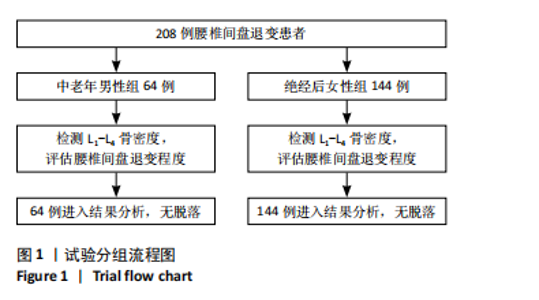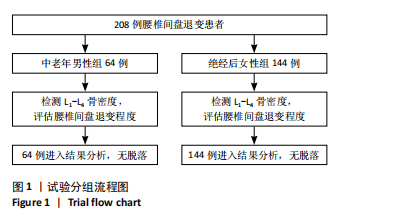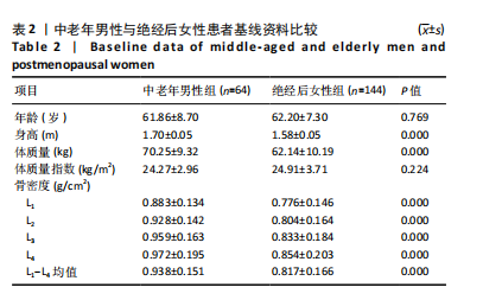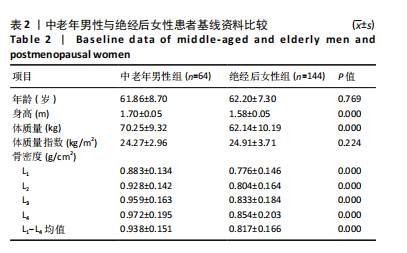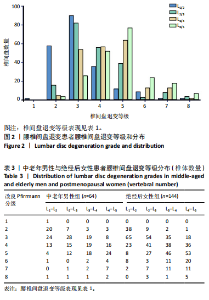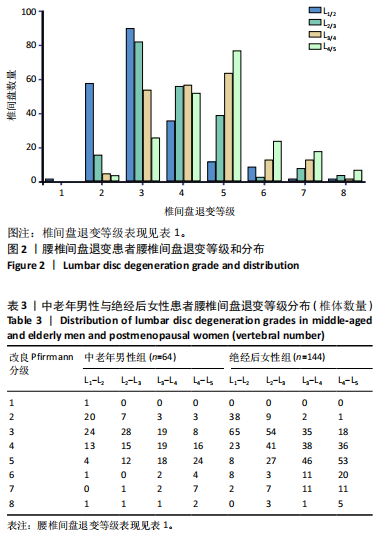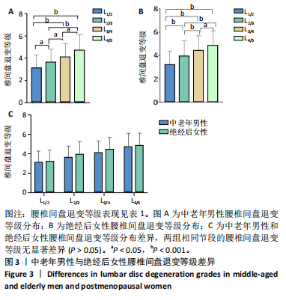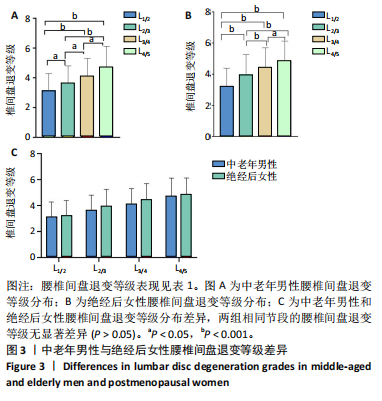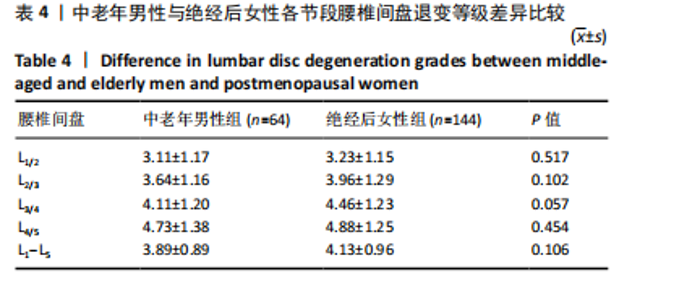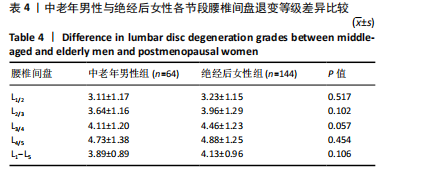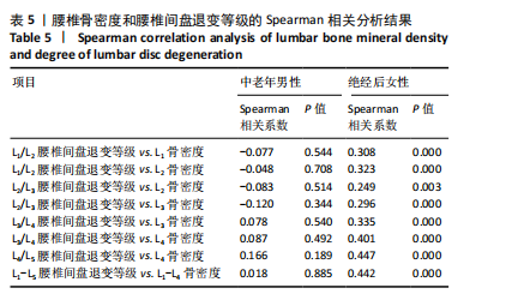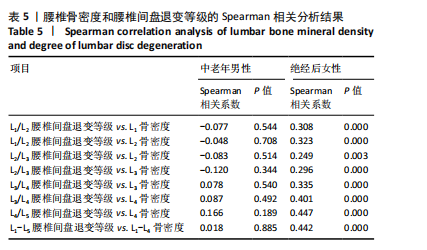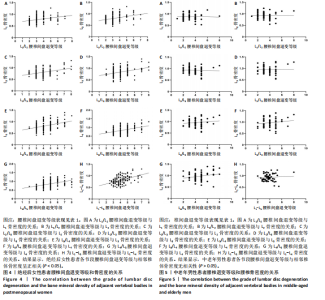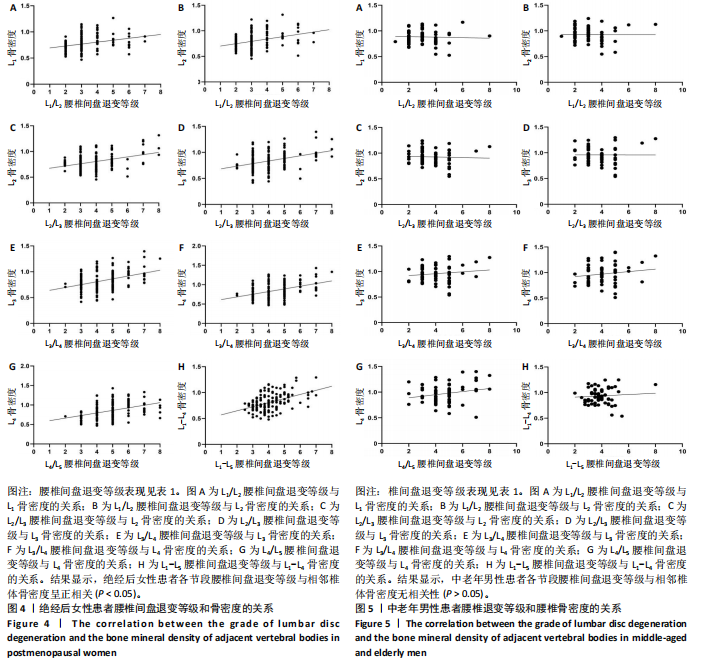[1] MOHD ISA IL, TEOH SL, MOHD NOR NH, et al. Discogenic Low Back Pain: Anatomy, Pathophysiology and Treatments of Intervertebral Disc Degeneration. Int J Mol Sci. 2022;24(1):208.
[2] WANG Z, ZHAO Z, HAN S, et al. Advances in research on fat infiltration and lumbar intervertebral disc degeneration. Front Endocrinol (Lausanne). 2022;13:1067373.
[3] ZHENG B, OUYANG L, SHI J, et al. Evaluating lumbar disc degeneration by MRI quantitative metabolic indicators: the perspective of factor analysis. J Orthop Surg Res. 2024;19(1):281.
[4] AWADALLA AM, ALJULAYFI AS, ALROWAILI AR, et al. Management of Lumbar Disc Herniation: A Systematic Review. Cureus. 2023;15(10): e47908.
[5] GRANGEAT AM, ERARIO MLA. The Use of Medical Ozone in Chronic Intervertebral Disc Degeneration Can Be an Etiological and Conservative Treatment. Int J Mol Sci. 2023;24(7):6538.
[6] MAO J, WANG D, WANG D, et al. SIRT5-related desuccinylation modification of AIFM1 protects against compression-induced intervertebral disc degeneration by regulating mitochondrial homeostasis. Exp Mol Med. 2023;55(1):253-268.
[7] DIWAN AD, MELROSE J. Intervertebral disc degeneration and how it leads to low back pain. JOR Spine. 2023;6(1):e1231.
[8] JIANG J, HUANG Y, HE B. Advances in the interaction between lumbar intervertebral disc degeneration and fat infiltration of paraspinal muscles: critical summarization, classification, and perspectives. Front Endocrinol (Lausanne). 2024;15:1353087.
[9] HONG SW, PARK KT, CHUNG YS, et al. Bone mineral density, cervical spine degeneration, head and neck posture, and neck pain in the post-menopausal females: A pilot study. PLoS One. 2021;16(9):e0257735.
[10] LI L, LI D, GENG Z, et al. Causal relationship between bone mineral density and intervertebral disc degeneration: a univariate and multivariable mendelian randomization study. BMC Musculoskelet Disord. 2024;25(1):517.
[11] LI X, XIE Y, LU R, et al. Q-Dixon and GRAPPATINI T2 Mapping Parameters: A Whole Spinal Assessment of the Relationship Between Osteoporosis and Intervertebral Disc Degeneration. J Magn Reson Imaging. 2022; 55(5):1536-1546.
[12] MURAKI S, YAMAMOTO S, ISHIBASHI H, et al. Impact of degenerative spinal diseases on bone mineral density of the lumbar spine in elderly women. Osteoporos Int. 2004;15(9):724-728.
[13] NANJO Y, MORIO Y, NAGASHIMA H, et al. Correlation between bone mineral density and intervertebral disk degeneration in pre- and postmenopausal women. J Bone Miner Metab. 2003;21(1):22-27.
[14] HUANG S, LU K, SHI HJ, et al. Association between lumbar endplate damage and bone mineral density in patients with degenerative disc disease. BMC Musculoskelet Disord. 2023;24(1):762.
[15] GENG J, HUANG P, WANG L, et al. The association of lumbar disc degeneration with lumbar vertebral trabecular volumetric bone mineral density in an urban population of young and middle-aged community-dwelling Chinese adults: a cross-sectional study. J Bone Miner Metab. 2023;41(4):522-532.
[16] INOUE N, ORÍAS AAE, SEGAMI K. Biomechanics of the Lumbar Facet Joint. Spine Surg Relat Res. 2020;4(1):1-7.
[17] ZHAO J, WANG J, XU H, et al. Intervertebral Disk Degeneration and Bone Mineral Density: A Bidirectional Mendelian Randomization Study. Calcif Tissue Int. 2024;114(3):228-236.
[18] PRICE T, HESP R, MITCHELL R. Bone density in generalized osteoarthritis. J Rheumatol. 1987;14(3):560-562.
[19] ORWOLL ES, OVIATT SK, MANN T. The impact of osteophytic and vascular calcifications on vertebral mineral density measurements in men. J Clin Endocrinol Metab. 1990;70(4):1202-1207.
[20] CHAMORO M, DE LUCA K, OZBULUT O, et al. Association between clinical findings and the presence of lumbar spine osteoarthritis imaging features: A systematic review. Osteoarthritis Cartilage. 2023; 31(9):1158-1175.
[21] ELMOUNEDI N, BAHLOUL W, AOUI M, et al. Original animal model of lumbar disc degeneration. Libyan J Med. 2023;18(1):2212481.
[22] WANG YXJ. Several concerns on grading lumbar disc degeneration on MR image with Pfirrmann criteria. J Orthop Translat. 2022;32:101-102.
[23] GRIFFITH JF, WANG YX, ANTONIO GE, et al. Modified Pfirrmann grading system for lumbar intervertebral disc degeneration. Spine (Phila Pa 1976). 2007;32(24):E708-712.
[24] PFIRRMANN CW, METZDORF A, ZANETTI M, et al. Magnetic resonance classification of lumbar intervertebral disc degeneration. Spine (Phila Pa 1976). 2001;26(17):1873-1878.
[25] ZHOU L, LI C, ZHANG H. Correlation between bone mineral density of different sites and lumbar disc degeneration in postmenopausal women. Medicine (Baltimore). 2022;101(13):e28947.
[26] KIM YK, KANG D, LEE I, et al. Differences in the Incidence of Symptomatic Cervical and Lumbar Disc Herniation According to Age, Sex and National Health Insurance Eligibility: A Pilot Study on the Disease’s Association with Work. Int J Environ Res Public Health. 2018;15(10):2094.
[27] TERAGUCHI M, YOSHIMURA N, HASHIZUME H, et al. Prevalence and distribution of intervertebral disc degeneration over the entire spine in a population-based cohort: the Wakayama Spine Study. Osteoarthritis Cartilage. 2014;22(1):104-110.
[28] LI R, ZHANG W, XU Y, et al. Vertebral endplate defects are associated with bone mineral density in lumbar degenerative disc disease. Eur Spine J. 2022;31(11):2935-2942.
[29] GUO J, YAN H, XIE Y, et al. A lumbar disc degeneration model established through an external compressive device for the study of microcirculation changes in bony endplates. Heliyon. 2023;9(5):e15633.
[30] LI H, TANG Y, LIU Z, et al. Lumbar instability remodels cartilage endplate to induce intervertebral disc degeneration by recruiting osteoclasts via Hippo-CCL3 signaling. Bone Res. 2024;12(1):34.
[31] VIDEMAN T, LEPPäVUORI J, KAPRIO J, et al. Intragenic polymorphisms of the vitamin D receptor gene associated with intervertebral disc degeneration. Spine (Phila Pa 1976). 1998;23(23):2477-2485.
[32] ZHONG R, WEI F, WANG L, et al. The effects of intervertebral disc degeneration combined with osteoporosis on vascularization and microarchitecture of the endplate in rhesus monkeys. Eur Spine J. 2016;25(9):2705-2715.
[33] LIU G, ZHANG H, CHEN M, et al. Causal relationship between intervertebral disc degeneration and osteoporosis: a bidirectional two-sample Mendelian randomization study. Front Endocrinol (Lausanne). 2024;15:1298531.
[34] ZHANG Y, PATIMAN, LIU B, et al. Correlation between intervertebral disc degeneration and bone mineral density difference: a retrospective study of postmenopausal women using an eight-level MRI-based disc degeneration grading system. BMC Musculoskelet Disord. 2022; 23(1):833.
[35] XI Z, XIE Y, SUN S, et al. Stepwise reduction of bony density in patients induces a higher risk of annular tears by deteriorating the local biomechanical environment. Spine J. 2024;24(5):831-841.
[36] FINE N, LIVELY S, SéGUIN CA, et al. Intervertebral disc degeneration and osteoarthritis: a common molecular disease spectrum. Nat Rev Rheumatol. 2023;19(3):136-152.
[37] VERSTRAETEN A, VAN ERMEN H, HAGHEBAERT G, et al. Osteoarthrosis retards the development of osteoporosis. Observation of the coexistence of osteoarthrosis and osteoporosis. Clin Orthop Relat Res. 1991(264):169-177.
[38] WANG Y, BOYD SK, BATTIé MC, et al. Is greater lumbar vertebral BMD associated with more disk degeneration? A study using µCT and discography. J Bone Miner Res. 2011;26(11):2785-2791.
[39] DECANDIDO P, REINIG JW, DWYER AJ, et al. Magnetic resonance assessment of the distribution of lumbar spine disc degenerative changes. J Spinal Disord. 1988;1(1):9-15.
[40] HOFFELD K, LENZ M, EGENOLF P, et al. Patient-related risk factors and lifestyle factors for lumbar degenerative disc disease: a systematic review. Neurochirurgie. 2023;69(5):101482.
[41] YUAN L, HUANG Z, HAN W, et al. The impact of dyslipidemia on lumbar intervertebral disc degeneration and vertebral endplate modic changes: a cross-sectional study of 1035 citizens in China. BMC Public Health. 2023;23(1):1302.
[42] LI S, DU J, HUANG Y, et al. From hyperglycemia to intervertebral disc damage: exploring diabetic-induced disc degeneration. Front Immunol. 2024;15:1355503.
[43] DECHSUPA S, YINGSAKMONGKOL W, LIMTHONGKUL W, et al. Vitamin D Inadequacy Affects Skeletal Muscle Index and Physical Performance in Lumbar Disc Degeneration. Int J Mol Sci. 2023;24(4):3152.
[44] HUANG Z, CHEN J, SU Y, et al. Impact of dyslipidemia on the severity of symptomatic lumbar spine degeneration: A retrospective clinical study. Front Nutr. 2022;9:1033375.
[45] WANG X, GAO Z, CHEN K, et al. Diabetes Mellitus and Intervertebral Disc Degeneration: A Meta-Analysis. World Neurosurg. 2024;188: e81-e92.
|
